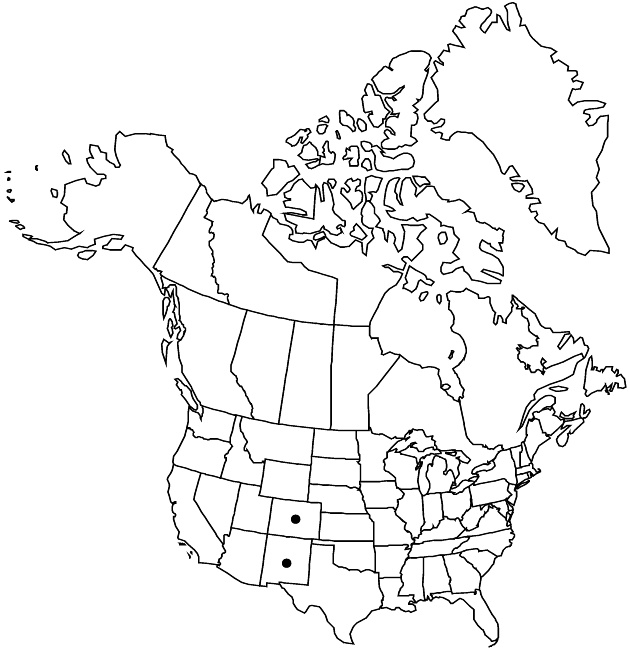Difference between revisions of "Senecio taraxacoides"
Pittonia 4: 119. 1900.
Basionym: Senecio amplectens var. taraxacoides A. Gray Proc. Acad. Nat. Sci. Philadelphia 15: 67. 1864
Synonyms: Ligularia taraxacoides (A. Gray) W. A. Weber
FNA>Volume Importer |
FNA>Volume Importer |
||
| Line 55: | Line 55: | ||
|publication year=1900 | |publication year=1900 | ||
|special status= | |special status= | ||
| − | |source xml=https://jpend@bitbucket.org/aafc-mbb/fna-data-curation.git/src/ | + | |source xml=https://jpend@bitbucket.org/aafc-mbb/fna-data-curation.git/src/f50eec43f223ca0e34566be0b046453a0960e173/coarse_grained_fna_xml/V19-20-21/V20_1213.xml |
|tribe=Asteraceae tribe Senecioneae | |tribe=Asteraceae tribe Senecioneae | ||
|genus=Senecio | |genus=Senecio | ||
Revision as of 20:24, 16 December 2019
Perennials, 5–10(–14) cm (caudices branched, fibrous-rooted). Herbage (sometimes purple-tinged) floccose-tomentose (persistently on abaxial faces of leaves, glabrescent elsewhere). Stems single or loosely clustered. Leaves ± evenly distributed; petiolate; blades oblanceolate to ovate, (1–)2–6 × 1–2.5 cm, bases tapered, margins dentate or incised to subpinnatifid (distal leaves bractlike). Heads 1(–5). Calyculi of 2–5 lance-linear bractlets (lengths 1/3–2/3 phyllaries). Phyllaries ± 13 or ± 21, 7–10 mm, tips green. Ray florets usually ± 13, sometimes fewer or 0; corolla laminae 8–12 mm. Cypselae glabrous. 2n = 40.
Phenology: Late summer.
Habitat: Alpine peaks
Elevation: 3500–4000 m
Discussion
Selected References
None.
Lower Taxa
None.
